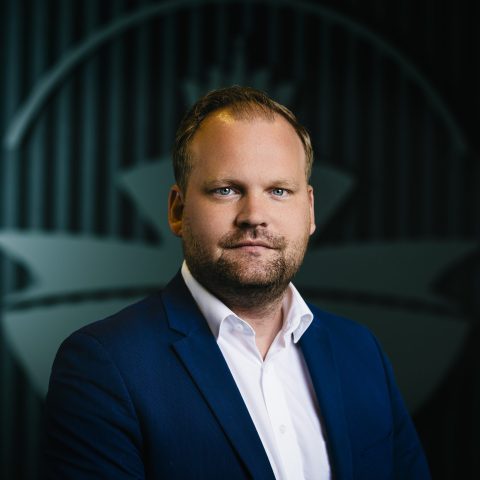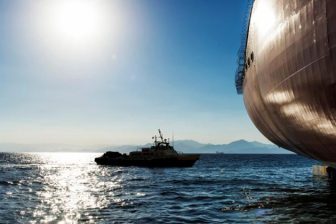
KVNR: ‘Greener will be rewarded with Fuel EU Maritime’
‘It is good that the polluter pays, but even better that greening will soon be rewarded,’ states Nick Lurkin of the Royal Association of Netherlands Shipowners (KVNR) in response to the European Parliament’s latest green proposal: FuelEU Maritime.
‘FuelEU Maritime’ consists of two parts. Firstly, from 2025 on, fuel used by shipping companies must be 2% cleaner than in 2020. This percentage will then be steadily increased every five years, and by 2050, a minimum of 80% cleaner must be achieved. ‘It is not per ship, but per company and is therefore about fleet average. So there can be compensation within a fleet. And even between shipping companies, compensation is possible,’ Lurkin explains. He is aware that this might lead to ‘greenwashing’ at first, ‘but as the requirement becomes more and more stringent, more and more seagoing vessels running on renewable fuels (such as green methanol, green hydrogen or green ammonia) are necessary.
Green fuel
From 2030, there will be an additional requirement. Then shipping companies will have to use renewable fuels for at least 2% of their fuel. Initially, biofuel can be blended in. But Lurkin expects that by 2030 shipping companies will also have to switch more to alternative fuels such as green methanol and green hydrogen.
The latter could still cause problems, in his view, because those renewable fuels will have to be sufficiently available and produced sustainably. ‘We will not only be competing within the shipping industry for those scarce fuels, but also with aviation and other land-based sectors who want to use them. We, as shipowners, will soon have to stick to the targets set and be fined if we fail to do so. It would be very unpleasant if that were because there is not enough green fuel available. Therefore, there must be a shared responsibility between shipowners and fuel producers and suppliers.
Funding
Lurkin is positive about the reward system behind the proposal. Those who sail greener than strictly necessary can offset that surplus against later years, when standards will become even stricter, or can even sell it to other shipowners who cannot comply.
The KVNR does, however, add a note of caution regarding the fundability of greening. In that context, Dutch shipowners are pleading in Europe for the so-called Fit-for-55 package, which includes Fuel EU Maritime but also EU-ETS, to apply to ships from 400 GT upwards. And not 5000 GT, which is currently still being discussed in the proposals. This would also allow shipping companies with small ships to be supported and rewarded for greening. That lobbying seemed successful earlier, but that adjustment of the proposals has not yet been fully secured, according to Lurkin.
Shore power
The second part of the Fuel EU Maritime proposal involves the obligation for container and passenger ships to use shore-side electricity in ports from 2030. There too, according to Lurkin, there are challenges to overcome. ‘This is not expected to be such a problem for ships, especially cruise ships. The challenge is mainly on the landside. This is because there has to be sufficient capacity on the electricity grid to run shore-side power installations.’
If the European Commission adopts the proposal and European member states agree to it, the law is expected to take effect in 2025.
Source: Schuttevaer



